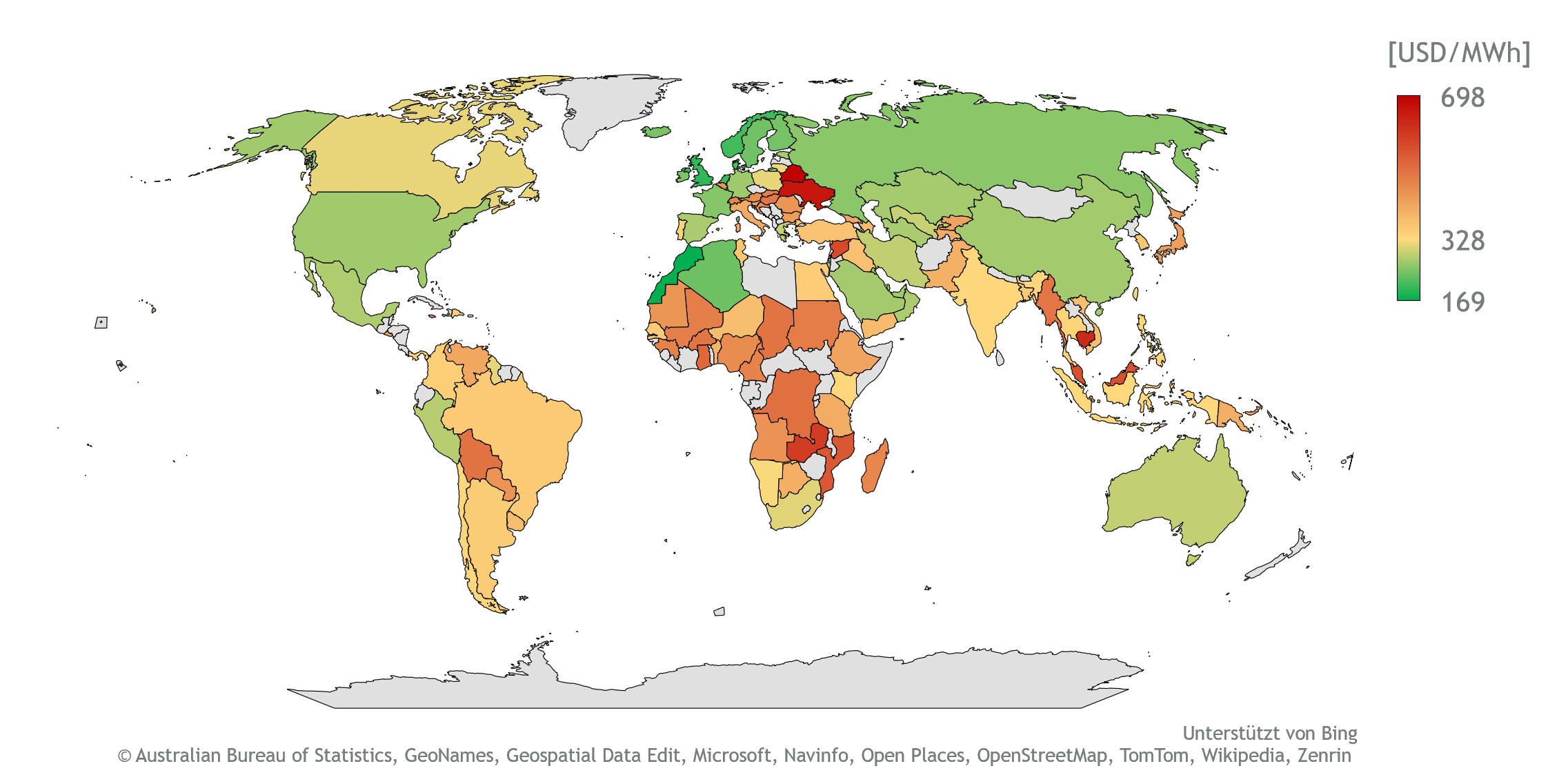
The update of the EWI Global PtX Cost Tool is now available free of charge on the homepage of the Institute of Energy Economics at the University of Cologne (EWI). The tool estimates future production and import costs of green hydrogen and hydrogen derivatives such as ammonia, methanol, and synthetic fuels. The updated tool also includes updated input data on production potentials and cost developments as well as further analysis on global investment conditions and the hydrogensupply profile.
The EWI Global PtX Cost Tool provides cost scenarios for the global supply of green hydrogen and hydrogen derivatives from wind and solar energy for 117 origin countries and 19 destination countries. The tool assumes that the wind or solar farm is built exclusively for the production of hydrogen on site. A distinction is made between a base scenario and an optimistic cost scenario. It is possible to analyze costs in 5-year increments up to 2050. The tool was updated by Dr. Ann-Katrin Klaas, Michael Moritz and David Wohlleben as part of the “Hydrogen Research Program” of the EWI and funded by the Gesellschaft zur Förderung des Energiewirtschaftlichen Instituts an der Universität zu Köln e. V..
An evaluation using the EWI Global PtX Cost Tool shows that, in addition to RES potential with high full-load hours, access to favorable project financing is important for producing green hydrogen and its derivatives. In addition, fluctuations in wind and solar power influence the availability and the costs of green hydrogen. With the updated tool, it is now also possible to examine how the volatility of renewable energies influences production and transportation costs. The update allows the import costs of two different supply profiles to be examined: With volatile supply, delivery takes place when production is possible in the country of origin, i.e. when the wind is blowing, or the sun is shining. The resulting delivery profile is displayed in the tool in monthly resolution. In the case of baseload supply, volatile production is balanced out by a storage facility in the origin country. Delivery is then more consistent, but more expensive.
Also new in the tool is a detailed calculation of country-specific weighted average costs of capital (WACC) for hydrogen projects. This calculation considers the global interest rate increases of recent years as well as country-specific investment risks and the technology risk of novel hydrogen processes. Country-specific investment conditions have a major impact on the cost of new green hydrogen projects, as capital costs are the largest cost item for such plants.
According to the tool, the import costs for green hydrogen to Germany are between approx. 170 and 700 USD/MWh (base scenario, strip supply) for projects that would be realized in 2030, depending on the origin country. Morocco offers the best conditions due to its good potential for renewable energies with high wind and PV full load hours and a possible pipeline connection. Overall, hydrogen from North Africa, countries bordering the North Sea and Scandinavia could be imported more cheaply than if it were produced in Germany. Hydrogen could be imported from these countries via pipeline, which would be significantly cheaper than transportation by ship. The tool also differentiates between various cost scenarios for the rededication of existing pipelines. It also enables the cost analysis of different transportation methods for the hydrogen derivatives ammonia, methane, methanol and Fischer-Tropsch products.
